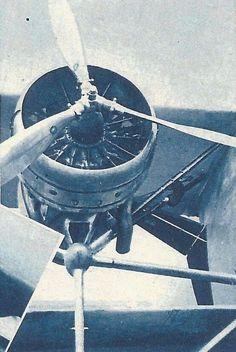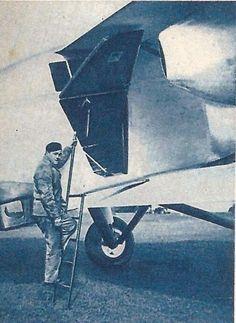In 1934, the Belgian Air Force drew up a specification for a multi-purpose bomber and long-range reconnaissance aircraft, which could also act as a heavy fighter. To meet this requirement, designs were produced by Les Ateliers de Constructions Aéronautiques Belges (LACAB) and by Stampe et Vertongen (the Stampe SV-10).
The LACAB design was a twin-engined biplane of mixed construction, with a slab-sided steel tube fuselage with plywood and fabric covering and wooden, two-bay unequal span wings. It was powered by two Gnome-Rhône Mistral Major radial engines mounted between the wings, and was fitted with a fixed tailwheel undercarriage.
Manually operated gun turrets, each mounting two machine guns, were mounted in nose and dorsal positions, while two more guns were in a ventral position.
The sole prototype first flew on 14 May 1936 and was handed over to the Belgian Air Force for testing on 2 July 1936. The Spanish Republican Air Force attempted to buy the prototype LACAB GR.8, but the international arms embargo prevented delivery to Spain.
.
| Type |
3-seat bomber |
| Engine |
2 Gnome-Rhöne 14Kdrs |
| Dimensions |
Length 13,45 m , height 4,15 m , span 18,00 m, wing area 65,0 m2 , |
| Weights |
Empty 3400 kg, loaded 5200 kg, max. take off weight |
| Performance |
Max.. speed 360 km/h at 4000 m , cruising speed , range 1000 km , endurance , service ceiling 8800m , climb to 4000 m 7,0 min. |
| Armament |
6 7,62 mm machine guns in nose, dorsal and ventral turrets. Bombs 800 kg |
| Type |
Werk.Nr |
Registration |
History |
|
|
|
This twin-engined bi plane bomber-prototype build by the Belgian company LACAB (Les Ateliers de Construction Aeronautiques Belges) was first flown on 22 February 1936.The prototype was badly damaged in a landing accident on 4 April 1938 with its undercarriage and starboard wings destroyed. Although the aircraft was repaired, it was not flown again, and no production was undertaken. And in May 1940 the GR.8 was found by the Germans in a hangar at Evere airfield and later scrapped |


